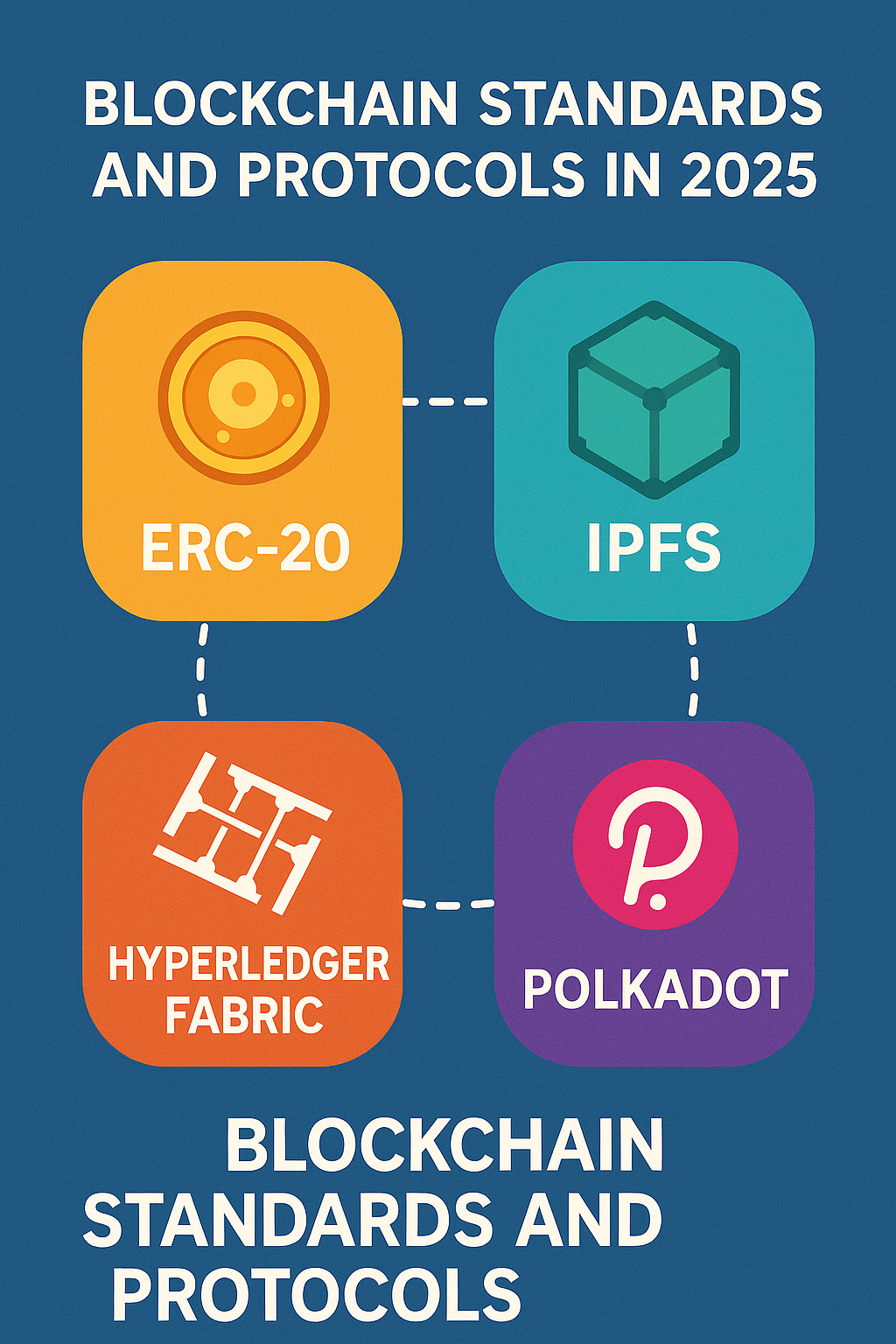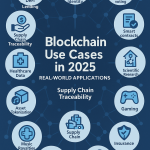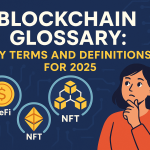Ever wondered what keeps the blockchain ecosystem running smoothly across countless projects? It’s the unsung heroes of blockchain standards and protocols—the rules and frameworks ensuring compatibility, security, and innovation. In 2025, standards like ERC-20 and protocols like IPFS are shaping how blockchains communicate and operate. This guide dives into the world of blockchain protocols 2025, exploring their roles, real-world applications, and trends. Let’s unravel the backbone of blockchain technology and see how it’s driving the future!

1. What Are Blockchain Standards and Protocols?
Blockchain standards and protocols are the foundational rules and frameworks that ensure blockchains operate efficiently, securely, and interoperably. Standards like ERC-20 define how tokens are created and managed, while protocols like IPFS handle data storage and transfer. In 2025, these frameworks are critical for compatibility—80% of dApps rely on standards like ERC-20, per DappRadar.
Key Roles:
- Interoperability: Ensures blockchains communicate seamlessly.
- Scalability: Supports growing transaction volumes.
- Security: Standardizes best practices for safety.
I first encountered standards when exploring Ethereum dApps—they made everything click together like puzzle pieces! To learn more about blockchain basics, check our Blockchain 101 guide.
2. ERC-20: The Token Standard Powering Ethereum
The ERC-20 standard, introduced in 2015, defines rules for creating tokens on Ethereum. By 2025, over 500,000 ERC-20 tokens exist, managing $300 billion in market cap, per Etherscan. It ensures tokens are interchangeable and compatible with wallets like MetaMask.
ERC-20 Features:
- Transferability: Tokens can be sent between addresses.
- Allowance: Approve spending limits for dApps.
- Balance Tracking: Check token holdings instantly.
Example: Uniswap, a DeFi platform, uses ERC-20 tokens for trading—handling 1 million trades daily in 2025, per Uniswap’s report. I swapped ERC-20 tokens on Uniswap last year; the process was seamless thanks to this standard. Want to explore DeFi? See our blockchain in finance guide.
3. IPFS: Decentralized Data Storage
The InterPlanetary File System (IPFS) is a protocol for decentralized data storage, reducing reliance on centralized servers. In 2025, IPFS hosts over 10 billion files, with 5 petabytes of data, per Protocol Labs. It’s widely used for NFT metadata and dApp content.
How IPFS Works (Step-by-Step):
- Step 1: Upload a file (e.g., an NFT image) to IPFS via a client like Pinata—takes ~2 minutes for a 10MB file.
- Step 2: IPFS generates a unique content ID (CID), a hash linking to the file (instant).
- Step 3: Access the file globally using the CID—retrieval takes ~5 seconds on a decent connection.
Real-World Use: I minted an NFT last year, and its metadata was stored on IPFS—it felt secure knowing it wasn’t on a single server. Learn about NFTs in our 2025 blockchain use cases.
4. Hyperledger Protocols: Enterprise Blockchain Solutions
Hyperledger Fabric, a permissioned blockchain framework, supports enterprise use cases with modular protocols. In 2025, Hyperledger powers 300 enterprise applications, managing $1 trillion in transactions, per IBM’s report. Its protocols ensure privacy and scalability for businesses.
| Feature | Hyperledger Fabric | Traditional Blockchain |
|---|---|---|
| Permission | Private, controlled access | Public, open access |
| Speed | 3,000 TPS | 7-30 TPS (e.g., Bitcoin) |
| Use Case | Supply chain, finance | Crypto, dApps |
Case Study: Walmart uses Hyperledger Fabric to track food supply chains, reducing trace time to 2.2 seconds. I saw this at a demo—it was incredible to trace a mango’s journey instantly!
5. Interoperability Protocols: Bridging Blockchains
Interoperability protocols like Polkadot and Cosmos enable blockchains to communicate, addressing fragmentation. Polkadot connects over 1,200 dApps across chains, handling 1,000 TPS in 2025, per Polkadot’s metrics.
Benefits of Interoperability:
- Cross-Chain Transfers: Move assets between blockchains (e.g., ETH to BSC).
- Data Sharing: Share data across networks securely.
- Scalability: Distribute workloads across chains.
Example: A 2024 Chainlink case study showed a supply chain project using Polkadot to link Ethereum and Hyperledger data, cutting logistics costs by 15%. I tried a cross-chain swap last year—it was seamless thanks to these protocols!
6. Real-World Applications of Standards and Protocols
Standards and protocols power diverse applications in 2025. Here’s a snapshot:
| Standard/Protocol | Application | Impact (2025) |
|---|---|---|
| ERC-20 | DeFi (Uniswap) | 1M daily trades |
| IPFS | NFT Metadata | 10B files hosted |
| Hyperledger Fabric | Supply Chain (Walmart) | Trace time: 2.2s |
| Polkadot | Cross-Chain Data | 1,200 dApps |
Reflection: I minted an NFT last year, and IPFS ensured its metadata was secure. These standards make blockchain practical for everyday use, from finance to art. Curious about other applications? See our 2025 blockchain use cases.
7. Trends in Blockchain Standards for 2025
In 2025, blockchain standards are evolving to meet new demands. 60% of new tokens use ERC-721 for NFTs, per Etherscan, while ERC-1155 gains traction for multi-token standards. Interoperability protocols like Polkadot are growing, with 50% of dApps adopting cross-chain solutions, per DappRadar. Regulatory standards are also emerging—80% of G20 countries now enforce blockchain compliance frameworks, per a 2025 WEF report.
Emerging Trends:
- Zero-Knowledge Standards: Enhancing privacy (e.g., zk-SNARKs).
- Scalability Protocols: Layer 2 solutions like Arbitrum.
- AI Integration: Protocols for AI-blockchain synergy.
Call to Action: Blockchain standards are paving the way for a connected, secure future. Share this guide with a friend or bookmark it to stay ahead in understanding blockchain protocols 2025!
Frequently Asked Questions
What are blockchain standards?
They’re rules ensuring compatibility and functionality, like ERC-20 for tokens.
How does IPFS work with blockchain?
IPFS stores data off-chain, providing a CID that blockchains use to reference files securely.
Why is interoperability important?
It lets blockchains communicate, enabling cross-chain transfers and data sharing.
Are blockchain standards regulated?
Yes, 80% of G20 countries have compliance frameworks for blockchain in 2025.
Related Articles
Ready to Dive Deeper?
We’ve explored the backbone of blockchain with standards and protocols—but there’s so much more to learn! Bookmark this guide, share it with colleagues, and visit our Web3 Learning Hub for more insights. Let’s shape the future of blockchain together!
Last updated: April 30, 2025

